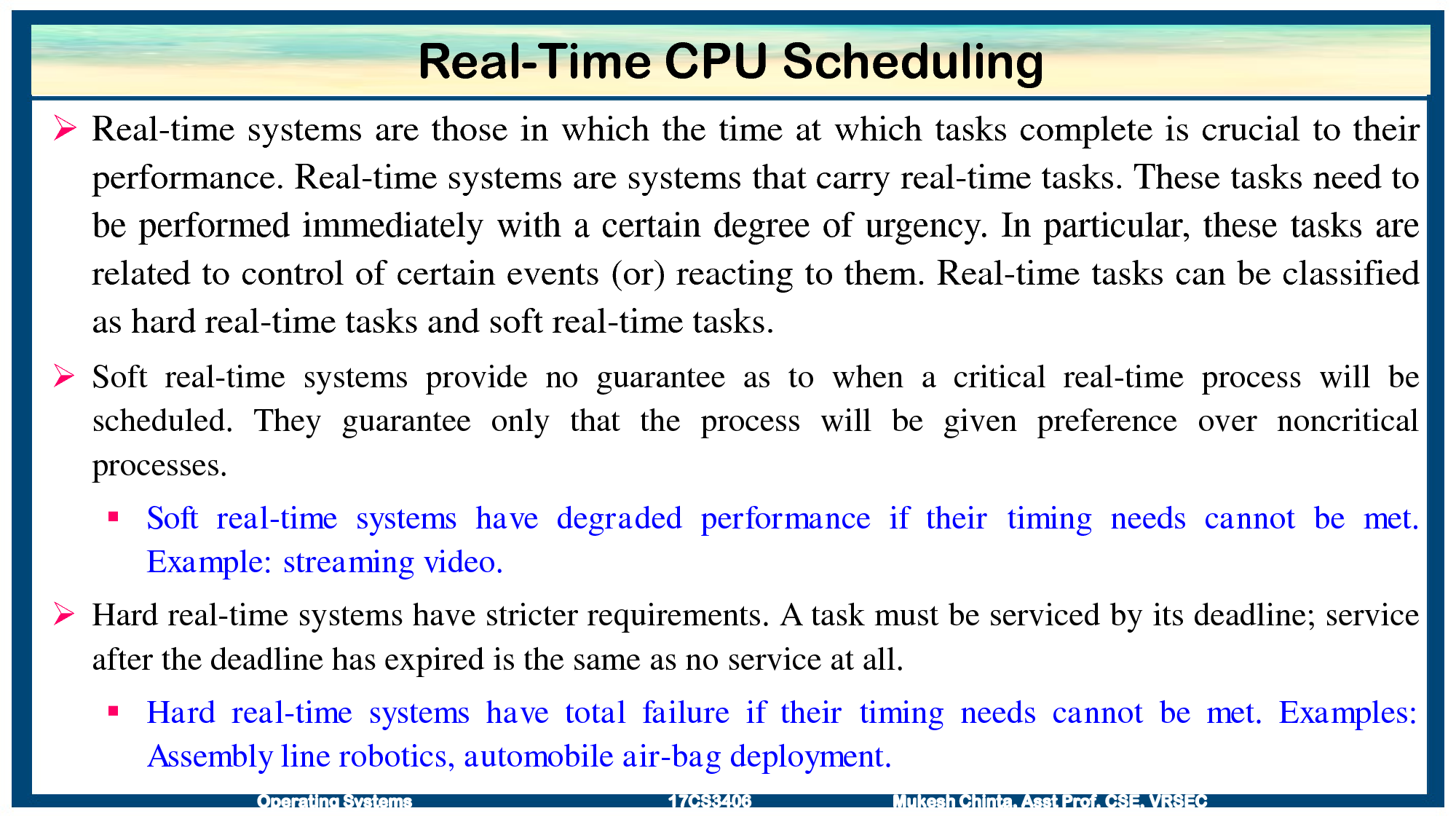
Mastering Real-Time Scheduling: A Comprehensive Guide to Efficient Task Management
Mastering Real-Time Scheduling: A Comprehensive Guide to Efficient Task Management
In the fast-paced world of technology and automation, real-time scheduling plays a crucial role in ensuring the seamless execution of tasks and processes. From industrial automation to operating systems and embedded systems, the concept of real-time scheduling is omnipresent. In this comprehensive guide, we will delve into the intricacies of real-time scheduling, exploring its importance, types, challenges, and best practices.
Understanding Real-Time Scheduling
Real-time scheduling refers to the process of managing tasks and processes with a specific focus on meeting deadlines and ensuring timely execution. Unlike traditional scheduling systems, real-time scheduling emphasizes time-sensitive operations, making it vital for applications where timing is critical.
Importance of Real-Time Scheduling
1. Precision in Timing
One of the primary reasons real-time scheduling is indispensable is its ability to provide precise control over task execution timing. In scenarios where tasks must be performed within strict time constraints, such as in industrial automation or aerospace systems, real-time scheduling ensures accuracy and reliability.
2. Responsiveness
Real-time scheduling enhances system responsiveness by prioritizing tasks based on their urgency. This is particularly crucial in applications where immediate responses are required, such as in communication systems, medical equipment, or autonomous vehicles.
3. Predictability
Predictability is a key factor in real-time systems. Real-time scheduling algorithms enable developers to predict and guarantee the maximum time it takes for a task to start or complete, allowing for effective resource allocation and system optimization.
Types of Real-Time Scheduling
Real-time scheduling can be broadly classified into two main types: hard real-time scheduling and soft real-time scheduling.
1. Hard Real-Time Scheduling
In hard real-time scheduling, meeting deadlines is of utmost importance. Failure to execute a task within its specified time frame can result in catastrophic consequences. Industries such as healthcare, aviation, and automotive heavily rely on hard real-time scheduling to ensure the safety and reliability of critical systems.
2. Soft Real-Time Scheduling
Soft real-time scheduling, on the other hand, allows for some flexibility in meeting deadlines. While timely execution is still essential, missing occasional deadlines may not lead to system failure. Applications like multimedia streaming and online gaming often use soft real-time scheduling to balance performance and reliability.
Challenges in Real-Time Scheduling
Despite its significance, real-time scheduling comes with its set of challenges that developers and system architects must address.
1. Determinism
Achieving determinism, or the ability to predict the exact time a task will be executed, is a significant challenge in real-time scheduling. Factors such as interrupt latency, task prioritization, and varying workloads can impact the predictability of task execution.
2. Resource Contention
In multi-tasking environments, tasks often compete for system resources. Resource contention can lead to delays in task execution, jeopardizing the real-time requirements of the system. Effectively managing and resolving resource contention is crucial for the success of real-time scheduling.
3. Scalability
As systems grow in complexity, scalability becomes a challenge. Real-time scheduling algorithms must scale efficiently to handle an increasing number of tasks without sacrificing performance or predictability.
Real-Time Scheduling Algorithms
To address the challenges associated with real-time scheduling, various algorithms have been developed. Each algorithm has its strengths and weaknesses, making it suitable for specific applications.
1. Rate Monotonic Scheduling (RMS)
Rate Monotonic Scheduling is a priority-based algorithm where tasks with shorter periods are assigned higher priorities. This algorithm is optimal for systems with periodic tasks and is known for its simplicity and efficiency.
2. Earliest Deadline First (EDF)
EDF assigns priorities based on the task’s deadline, with tasks having closer deadlines receiving higher priorities. This dynamic scheduling algorithm adapts well to varying workloads but requires more complex bookkeeping.
3. Fixed Priority Scheduling
In fixed priority scheduling, each task is assigned a fixed priority that does not change during runtime. While simple to implement, it may lead to priority inversion, where a lower-priority task holds resources needed by a higher-priority task.
4. Least Slack Time Scheduling (LSTS)
LSTS prioritizes tasks based on their slack time, which is the time remaining for a task to meet its deadline. This approach aims to optimize system throughput by selecting the task with the least slack time first.
Real-Time Scheduling in Operating Systems
Real-time scheduling is a critical aspect of operating systems, ensuring that tasks are executed in a timely manner. Different operating systems adopt various real-time scheduling policies to cater to diverse application requirements.
1. Linux Real-Time Scheduling
Linux provides real-time capabilities through the use of the Completely Fair Scheduler (CFS) and the Round Robin (RR) scheduler. Additionally, the Preempt-RT patchset enhances Linux with real-time capabilities, making it suitable for applications with stringent timing requirements.
2. Real-Time Operating Systems (RTOS)
RTOS is specifically designed to meet the stringent timing requirements of real-time applications. Popular RTOS include FreeRTOS, VxWorks, and QNX, each offering real-time scheduling mechanisms tailored for different use cases.
Best Practices for Real-Time Scheduling
To successfully implement real-time scheduling in your applications, consider the following best practices:
1. Task Prioritization
Carefully prioritize tasks based on their urgency and importance. Assign higher priorities to tasks with more stringent timing requirements.
2. Minimize Interrupt Latency
Interrupts can introduce unpredictable delays in task execution. Minimize interrupt latency by optimizing interrupt service routines (ISRs) and prioritizing critical interrupts.
3. Resource Management
Effectively manage and allocate system resources to prevent contention. Utilize synchronization mechanisms and implement resource-sharing policies to avoid conflicts.
4. Periodic Monitoring and Analysis
Regularly monitor and analyze system performance to identify potential bottlenecks or deviations from real-time requirements. Implement logging and debugging mechanisms for thorough analysis.
5. Test and Validate
Thoroughly test your real-time scheduling implementation under various scenarios to ensure it meets the specified requirements. Validation is crucial to guarantee the reliability and predictability of the system.
Conclusion
Real-time scheduling is a fundamental aspect of modern computing systems, influencing industries ranging from aerospace to healthcare. Understanding the types of real-time scheduling, the challenges it presents, and the various algorithms available is essential for developers and system architects.